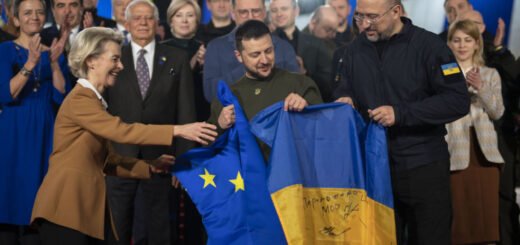Putin’s move on nuclear weapons sparks concerns over global security

Mutual deterrence between countries can become more complicated with the potential increase of nuclear arsenals, which could lead to other nations like China, India, and Pakistan building up their own nuclear capabilities. In a speech almost a year after invading Ukraine, Putin claimed that Russia was not abandoning the New START treaty, which limits the number of Russian and U.S. deployed strategic nuclear warheads. However, nuclear experts noted that the treaty does not allow for either side to suspend participation, only to withdraw from it. Putin insisted on resuming discussions about the treaty, but only if French and British nuclear weapons were also taken into account, a condition that was opposed by Washington and required a complete rewriting of the treaty.
William Alberque, a director at the International Institute for Strategic Studies, suggested that Russia had made the decision to live without the treaty, but aimed to blame the United States for its loss. The treaty restricts the number of warheads per missile that either side can deploy, and if it collapses, it could potentially multiply the warhead count several times over. Russia has an estimated 5,977 nuclear warheads, and the United States has 5,428. Alberque noted that both sides could increase their deployed strategic warheads from 1,550 to 4,000 overnight, creating a “use or lose” dilemma that could be destabilizing.
Putin justified Russia’s move by citing the absurdity of the United States demanding the right to inspect Russian nuclear sites while NATO was helping Ukraine to attack them. He referred to alleged Ukrainian strikes on Russian territory in December, but no evidence was provided. Analysts James Cameron and William Alberque noted that abandoning the treaty would return to the Cold War-style guesswork about the adversary’s capabilities and intentions, leading to more instability between the two sides and a greater risk of nuclear use.
If the treaty collapses, it would end more than half a century of arms control pacts between the United States and Russia and signal to other existing and would-be nuclear powers that they too could build up their arsenals. This could be more dangerous than the Cold War as it could encourage many more players to race up to higher numbers, which would be terrible for global security. Putin’s suggestion that Russia might resume testing nuclear weapons was also concerning, and any test would be viewed as an attempt to signal greater readiness to use nuclear weapons in the context of the war in Ukraine.

What is New START Treaty?
The Strategic Arms Reduction Treaty (START), which oversaw the drawdown of nuclear forces between the United States and Russia in the 1990s, expired in 2009. The following year, the New START treaty was signed in Prague as a continuation of the original agreement. The Obama administration put further restrictions on American and Russian nuclear stockpiles, including a cap of 1,550 deployed warheads, along with limits on the number of deployed missiles, bombers, and launchers. The two countries have conducted hundreds of on-site inspections and notifications to ensure compliance with the treaty.
President Joe Biden reached an agreement with Russian President Vladimir Putin to extend the New START treaty for five years in 2021. However, tensions between the two countries have increased since Russia’s decision to invade Ukraine in February 2022. Despite Russia’s continued postponement of on-site inspections due to the pandemic, both countries have committed to creating a new agreement to achieve deeper, irreversible, and verifiable reductions in their nuclear arsenals. The U.S. State Department recently informed Congress that Moscow’s resistance to on-site inspections has put it in a position of non-compliance with the treaty.


















